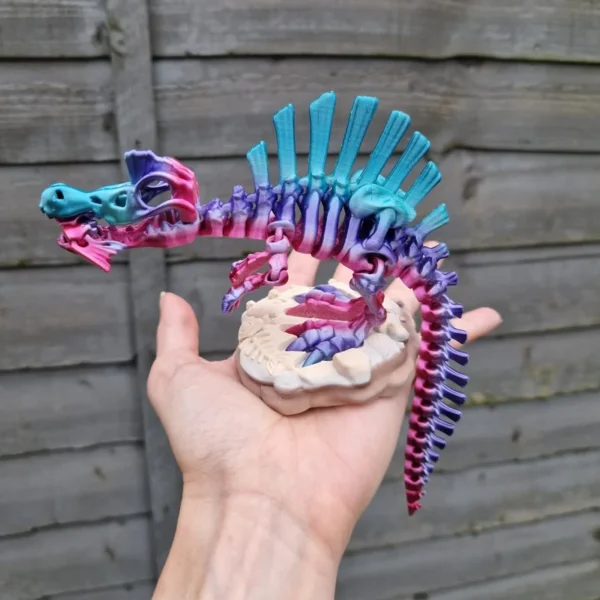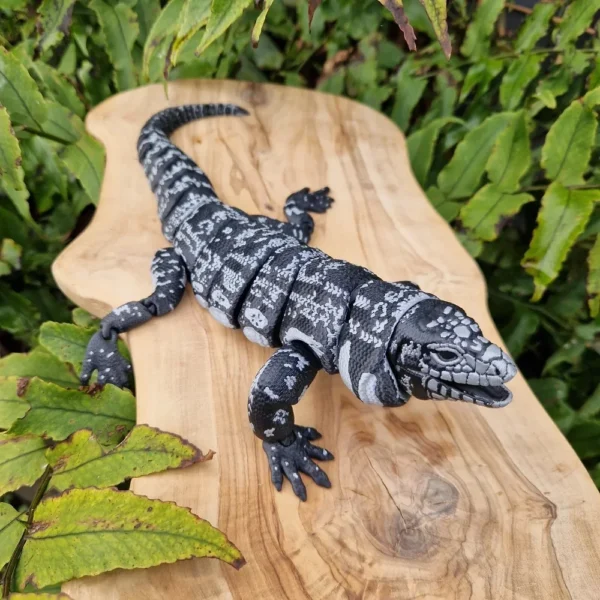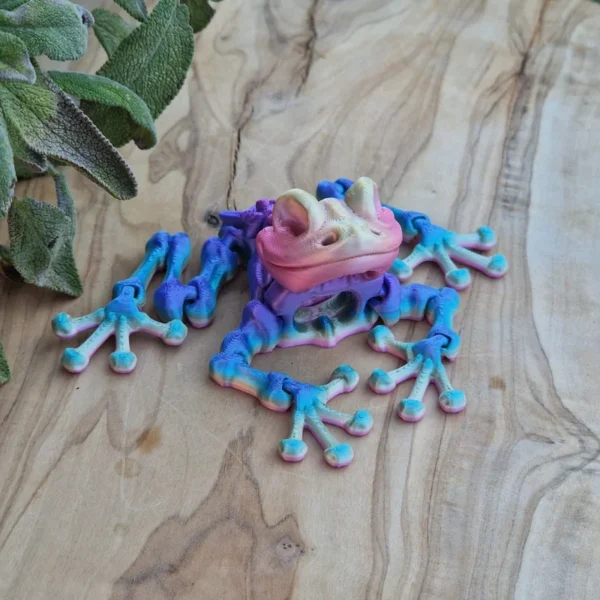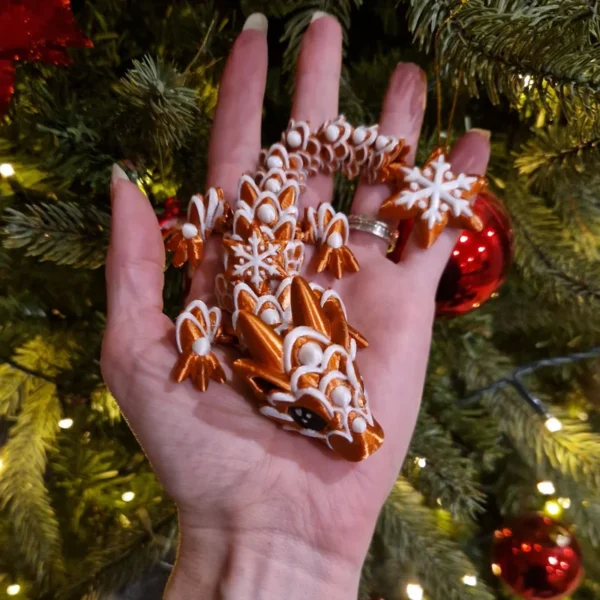If you’re a neurospicy adult (ADHD, autism, anxiety, or any combination of the above and others!), you probably already know the power of a good fidget. Maybe you have a favorite—something smooth and clicky, a satisfying squish, or a puzzle that keeps your fingers busy while your brain does its thing.
Fidgeting isn’t just a strange habit; it’s a tool for focus, regulation, and stress relief. And let’s be real—sometimes, it’s the difference between getting through a boring meeting in one piece, or mentally launching ourselves into space.
But not all fidgets are created equal, and today, we’re diving into why they work, how they help, and why 3D-printed articulated models are an absolute game-changer in the fidget world.
So, Why Do We Fidget?
Fidgeting is our brain’s way of keeping itself engaged. For neurodivergent adults, especially those with ADHD and autism, movement can actually enhance focus rather than distract from it.
Here’s why:
✅ ADHD brains crave stimulation. If our environment isn’t providing it, we create it. Fidgeting gives our hands something to do, which frees up our brains to focus.
✅ Autistic brains use fidgeting for regulation. Stimming (self-stimulatory behavior) helps regulate emotions, reduce anxiety, and prevent sensory overload.
✅ Anxious brains need an outlet. Fidgeting can help redirect nervous energy, preventing things like nail-biting, leg-bouncing, or other habits that might be less productive.
In short? Fidgets help us function better in a world that often isn’t designed with our brains in mind.
🔎 What Makes a Good Fidget?
A great fidget should be:
✔ Satisfying to use – If it’s not fun, we won’t reach for it.
✔ Engaging but not distracting – The goal is focus, not a full-on detour into a fidget obsession (though, let’s be honest, we’ve all been there!).
✔ Durable – No one wants a fidget that falls apart after two weeks of use.
💡 This is where 3D-printed articulated models absolutely shine.
3D-Printed Articulated Models: The Ultimate Neurodivergent Fidget
If you haven’t played with a 3D-printed articulated model, you’re missing out. These aren’t just any fidgets—they’re mechanical, flexible, and endlessly satisfying, plus they have personality!
Why Are They So Good?
🔄 Endless movement – The joints move fluidly, offering a continuous, engaging motion.
🤲 Tactile satisfaction – The way the pieces click and glide against each other? Chef’s kiss.
👀 Visually stimulating – Watching the movement is just as satisfying as feeling it.
🎨 Unique and customisable – Unlike mass-produced fidgets, these come in all sorts of designs, from dragons to snakes to geometric patterns.
If you need movement to focus but get bored with typical fidgets, articulated models keep your hands (and brain) engaged in new and interesting ways.
🧠 How Different Brains Use Them
One of the coolest things about articulated fidgets? They adapt to different needs!
For ADHD Brains:
✔ Keeps hands busy so your brain can focus.
✔ Helps prevent impulsive habits (like nail-biting or clicking pens endlessly).
✔ Adds just enough stimulation to prevent zoning out.
For Autistic Brains:
✔ A repetitive, soothing motion for emotional regulation.
✔ A socially acceptable way to stim in work settings.
✔ A great tool for sensory-seeking needs.
For Anxiety:
✔ A physical outlet for nervous energy.
✔ Something to focus on during overwhelming situations.
✔ A grounding tool when anxiety spirals start to take over.
Why 3D-Printed Models Are Better Than Mass-Produced Fidgets
Sure, you can grab a plastic fidget spinner or a pop-it from any toy store, but 3D-printed fidgets offer something different.
🎨 More Unique Designs
Mass-produced fidgets often feel repetitive. Articulated models come in infinite designs—from detailed dragons to geometric patterns that are mesmerizing to move.
✨ Better Sensory Experience
The movement of articulated models is smoother and more engaging than standard fidgets. There’s something about the way the pieces glide that just hits differently.
🛠 Higher Durability
Good 3D-printed models are sturdy and long-lasting. Unlike cheap fidgets that break easily, these are made to withstand real neurodivergent use.
🎨 Customisable to Your Needs
Need a heavier fidget? A different texture? A specific color? 3D printing allows for total customisation, making it easier to find the perfect fidget for you.
The Future of Fidgeting
As neurodivergence becomes more understood, the demand for better, more effective fidgets is growing. And 3D printing is leading the way, offering creative, durable, and endlessly satisfying options that go beyond what mass production can offer.
If you’ve struggled to find a fidget that really works for you, it might be time to try an articulated model. Whether you need a smooth, rhythmic stim, a fidget that keeps your hands occupied without pulling your brain away, or just something really flipping cool to play with—there’s a 3D-printed fidget out there for you.
Want to Try One?
I love the fact that our dragon models are used as 3D-printed articulated fidgets. Whether you want a sleek, pocket-sized fidget for work or an eye-catching dragon to keep your hands busy, we’ve got something for you.
👉 Check out our collection and find your new favorite fidget!
🔗 Shop Now








